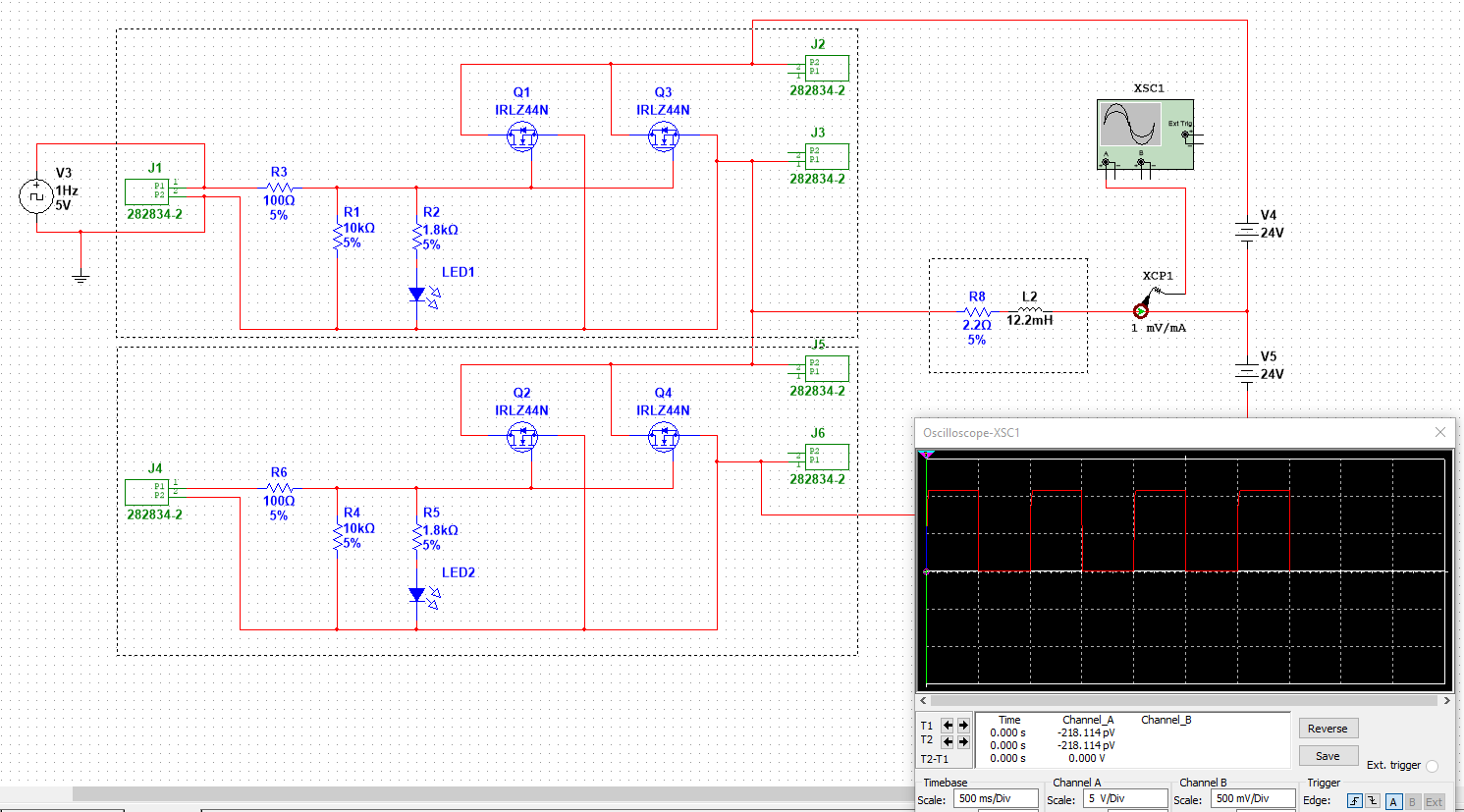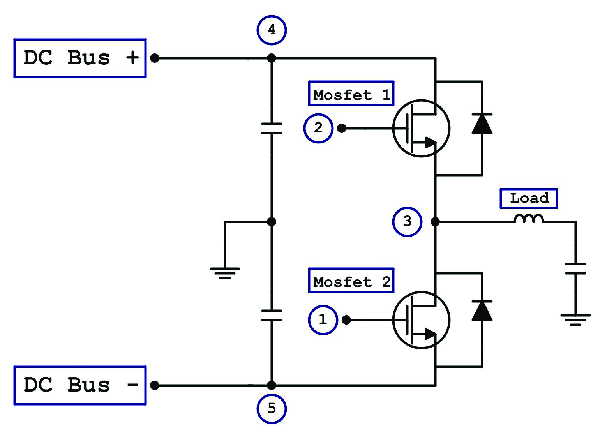I have two of these common nMOSFET trigger modules:
The schematic is essentially this (D4184 FETs replaced with similar logic-level FET as Multisim doesn't have the D4184/AOD4184):
With these two modules, I'm trying to make a simple pulse motor with a half H-bridge using two power supplies (on hand). Here is the start of the iteration with two of these modules and a clock source from, say, a microcontroller:
There are no freewheeling diodes yet. In the next iteration, I realize that the GND of both modules are tied together through the microcontroller like so, so a short circuit through the microntroller results:
My first thought is to mitigate this with barrier diodes. However, I'm a novice with power electronics and dealing with the capacitance in the FETs, so in simulations, only a handful of switching diodes (like the 1N4148) are effective.
Common Zener diodes and Schottky diodes cause terrible waveforms in the oscilliscope, and the choice of diode varies the current reaching the load, so they are affecting activation of the FETs. It's a mess. This is the only reasonable simulation I could find:
Questions:
To avoid this becoming an X-Y problem, what is a better way to use these two n-MOSFET modules to establish a half H-bridge using a dual power supply?
Is there a better way to isolate GND between the MCU and PSUs without optocouplers? Adding caps at different points along the GND segment adversely affects biasing of the FETs.
Where would I even put freewheeling diodes? Is this a doomed design to begin with?
My inspiration comes from circuits like these:
But, no one shows how to bias those gates - just "some pulse". Are these logic-level pulses? VDD/-VDD pulses? It's unclear how they avoid a short-circuit themselves.










